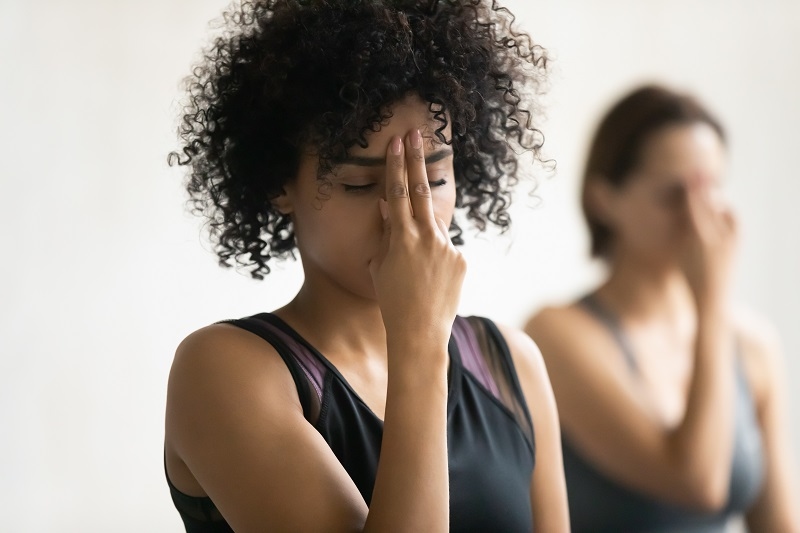
Stress and anxiety have of late been a common part of life in this fast-paced world. It could be because of pressures at work, problems in life, or simple overwhelm; one should find a way to de-stress or to settle the mind. Breathing is one of the best and natural methods of reducing stress. Learning how to breathe to relieve stress not only provides your body and mind with an opportunity to refocus, re-energize, and calm down. Now, let us discuss 7 known stress and anxiety-relief breathing techniques. These can be conveniently practiced at home, do not need special equipment, and can be done virtually everywhere.
One of the best breathing techniques to relieve stress is the diaphragmatic breathing, or abdominal breathing, or belly breathing. It assists you in slowing down your rate of breathing, lowering your heart rate, and stabilising the nervous system.
This method emphasises breathing deeply using those deep muscles below your lungs. By and large, most human beings breathe on their chests when anxious. Full oxygen exchange in the event of using diaphragmatic breathing promotes stress and anxiety relief.
Box breathing is a structured and rhythmic technique often used by Navy SEALs and athletes. It’s ideal for managing high-stress situations and bringing the body back to balance.
It’s a calming technique that involves equal counts for inhaling, holding, exhaling, and holding again. This structured breathing rhythm gives your mind something to focus on and helps you reset your mental state.
This powerful breathing pattern is recommended for quick relaxation and is especially effective before bedtime.
The 4-7-8 method works by slowing your heart rate and calming your mind. It’s one of the most recommended breathing techniques for anxiety and stress because of how fast it works.
This ancient yogic breathing practice is a type of advanced calming technique that helps balance the body and mind. It is excellent for deep relaxation and focus.
It involves closing one nostril at a time while breathing through the other in a controlled rhythm. This helps clear blocked energy channels and reduces mental clutter.

Resonance breathing, also known as coherent breathing, is a scientific method to regulate your heart rate and breathing in sync. It’s a highly effective tool in stress and emotional management.
This method involves breathing at a rate of about 5 breaths per minute, which is much slower than the usual 12–20 breaths per minute. It creates a harmonious rhythm between heart and lungs.
Pursed-lip breathing is simple yet powerful. It’s often used by people with lung conditions, but it’s also a great breathing technique for stress relief.
It helps slow your breathing down and keeps your airways open longer, allowing for better oxygen flow and less physical tension.
Lion’s breath is a fun and energizing calming technique that releases tension in your face, chest, and body. It’s especially helpful if you feel frustrated or mentally blocked.
This yogic breathing exercise includes a big exhale while sticking out your tongue and roaring like a lion. It may sound silly, but it helps relieve emotional baggage and brings laughter, too.
Practicing deep breathing for stress regularly can transform your mental and physical well-being. Here are a few simple ways to include these techniques in your day:
Start your day with 5 minutes of any calming technique. It sets the tone for a peaceful day.
Instead of scrolling on your phone, take a few minutes to breathe and reset between tasks.
Breathing with Meditation has an added value to the positive effects of both practices, and it will allow you to become more connected.
Knowing how to breathe to relieve stress can change your life. These anxiety and stress breathing methods are natural, cost-free, and can be done using any place. Apply them to a tense meeting, a traffic jam, or when you wake up in bed and can not fall asleep: the techniques will certainly help you bring your body and mind under control.
The more you train, the more your body and mind will react. Therefore, select two or three methods that feel correct to you, and integrate them into your routine, everyday life. As time goes by and you stick with it, you will discover that your mind is more relaxed and in a better state of mind, and you are more capable of dealing with life changes.
This content was created by AI